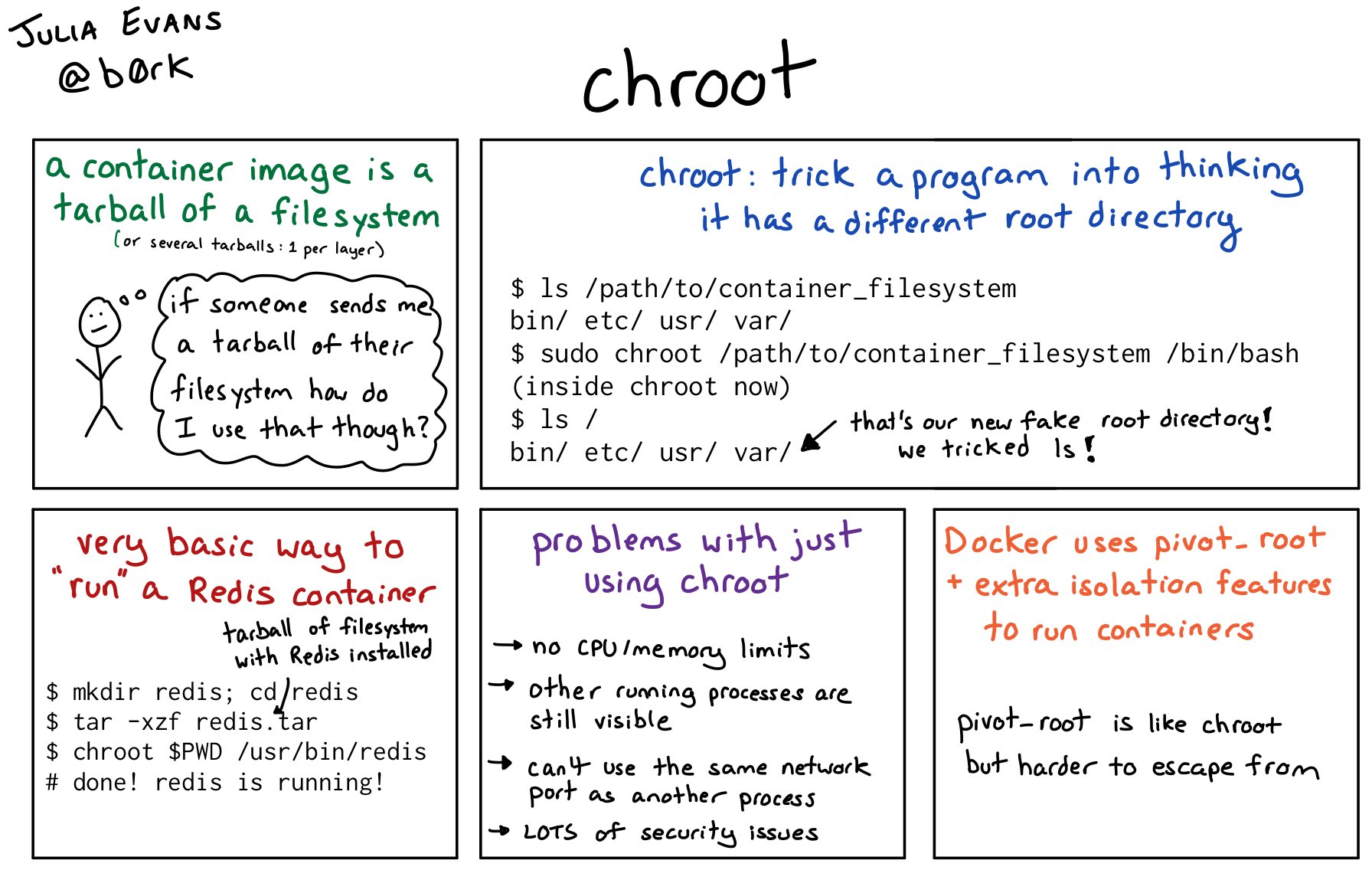Chroot System Call
Rohit Kumar
•
20 May 2024
•
4 mins

While doing my seminar course at IIT bombay (it’s like a litrature survey) on Serverless architecture also known as Function-as-a-Service is yet another type of cloud service provided by public cloud service provides such as AWS (lambda), GCP(Google function) and AWS(Azure functions).
I came across chroot system call while reading this paper SOCK: Rapid Task Provisioning with Serverless-Optimized Containers by Edward Oakes et al. It has proposed lightweight isolation as opposed to namespace isolation to solve the problem of coldstart (this is another topic may be will discuss in a seperate blog). A part of solution is to use chroot (latency < 1μs) to provide isolation as instead to namespace isolation (IPC and mount namespace latency > 10ms). At the time though I was aware of chroot syscall but I didn’t know how it works under the hood. So, I started looking into the implementation of chroot and it’s working.
what is chroot?
chroot changes the apparent root directory for a process and its children. It creates an isolated environment, often used for testing, development, or containing potentially untrusted programs.
#include <unistd.h>
#include <stdio.h>
#include <stdlib.h>
int main(int argc, char *argv[]) {
// Change root directory
if (chroot("/isolate-dir") != 0) {
perror("chroot");
exit(EXIT_FAILURE);
}
// Change to the new root directory
if (chdir("/") != 0) {
perror("chdir");
exit(EXIT_FAILURE);
}
// Execute a new shell
char *shell = "/bin/bash";
char *args[] = {shell, NULL};
execvp(shell, args);
// If execvp returns, an error occurred
perror("execvp");
exit(EXIT_FAILURE);
}
how it works ?
The chroot is implemented in the Linux kernel source code in the file fs/open.c. You can look it on the github linuc repository. Let’s dive into it’s working
So there is struct fs_struct, a data structure in the Linux kernel that holds the filesystem-related context of a process. This includes information such as the current working directory, the root directory, and the umask. Each process in the kernel has a pointer to an fs_struct, which encapsulates this context. The chroot syscall bsically update the root directory of the process by changing this fs_struct inside task_struct. That’s it, it’s as simple as that.
struct fs_struct {
spinlock_t lock; // Protects the structure
int users; // Reference count
seqcount_t seq; // Sequence counter for path walking
struct path root; // Root directory
struct path pwd; // Current working directory
umode_t umask; // File creation mode mask
};
struct task_struct {
// Process state
volatile long state; // Current state of the process (running, sleeping, etc.)
void *stack; // Process kernel stack
// Scheduling information
pid_t pid; // Process ID
pid_t tgid; // Thread group ID
struct task_struct *parent; // Pointer to the parent process
struct list_head children; // List of child processes
struct list_head sibling; // List of sibling processes
struct list_head tasks; // List of all processes
// Memory management
struct mm_struct *mm; // Address space of this process
struct mm_struct *active_mm; // Active address space
// File system
struct fs_struct *fs; // Filesystem information
struct files_struct *files; // Open file descriptors
// Signal handling
struct signal_struct *signal; // Shared signal handlers
struct sighand_struct *sighand;// Signal handlers
// Timers
struct list_head cpu_timers[3]; // CPU-specific timers
// Debugging
unsigned int flags; // Various flags (e.g., for debugging)
unsigned int ptrace; // Ptrace flags
// More fields...
};
Picture Source: Google Images